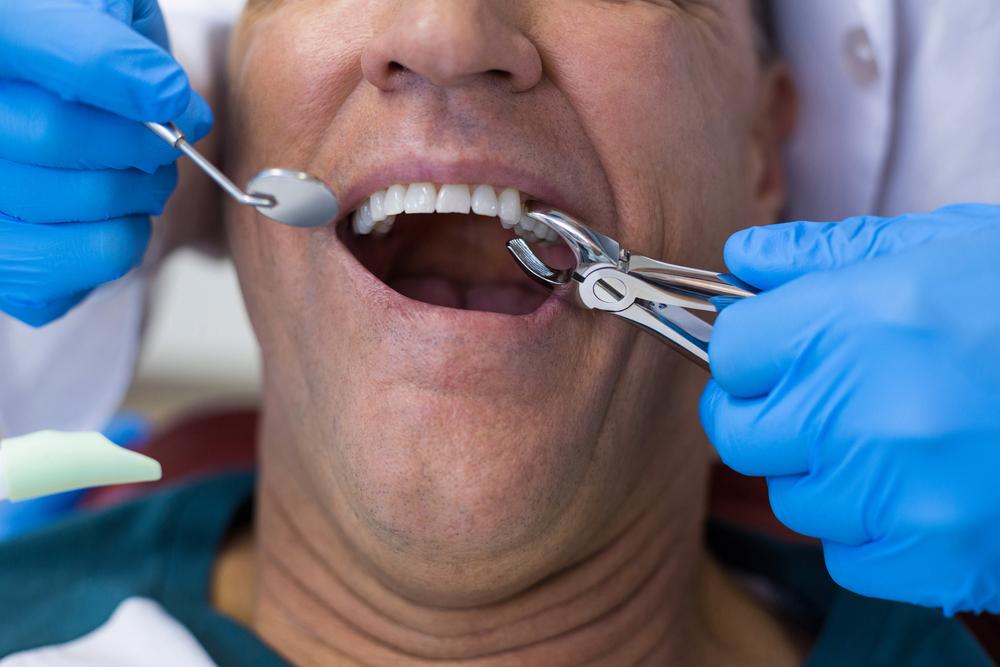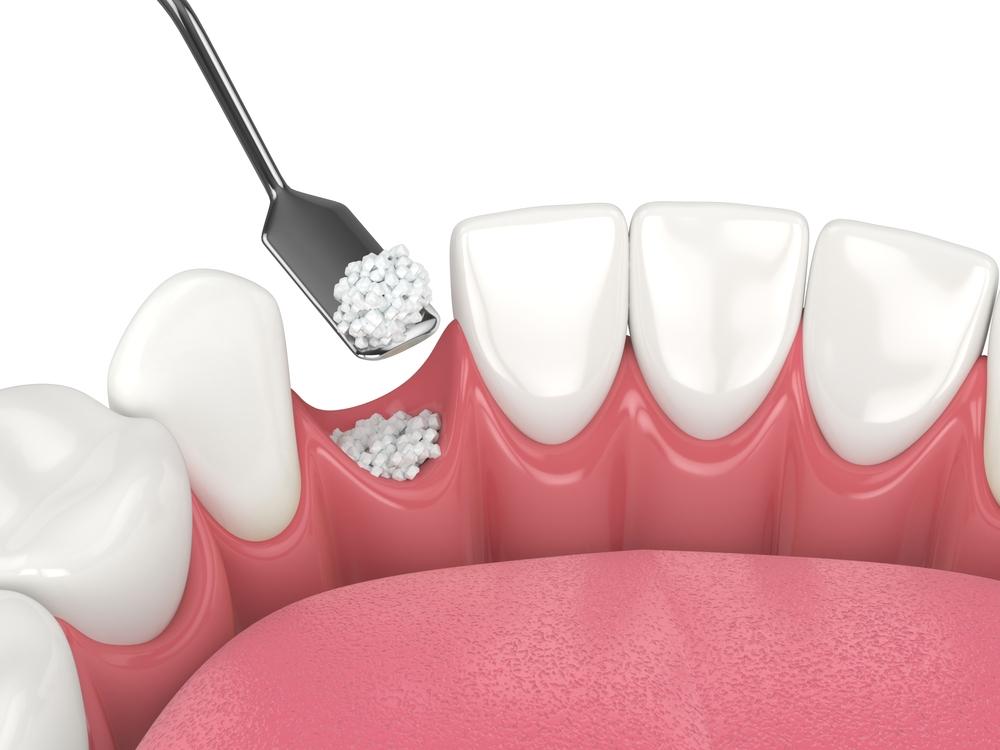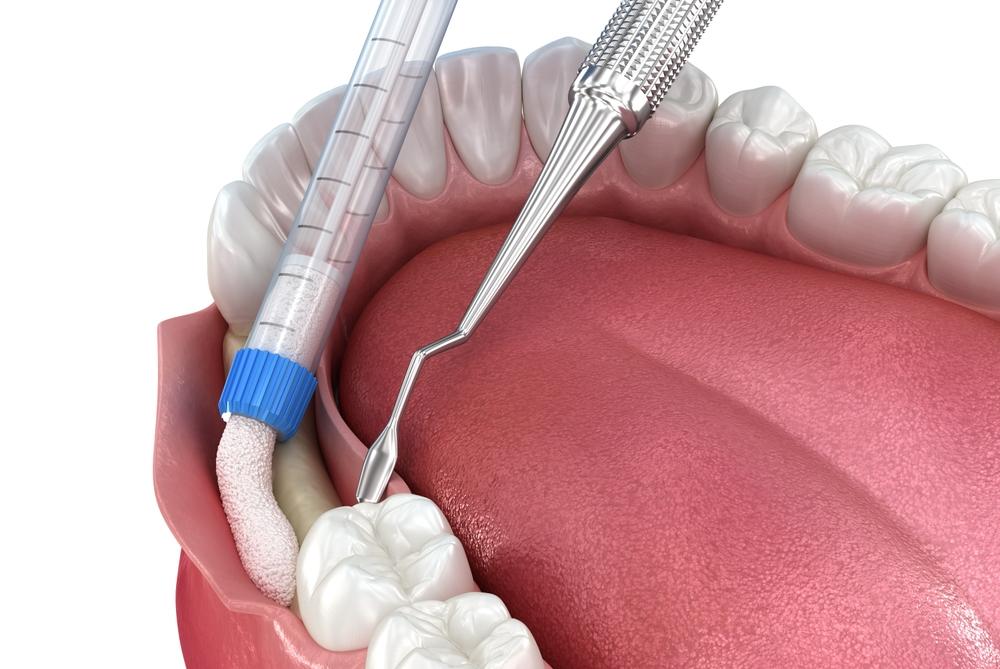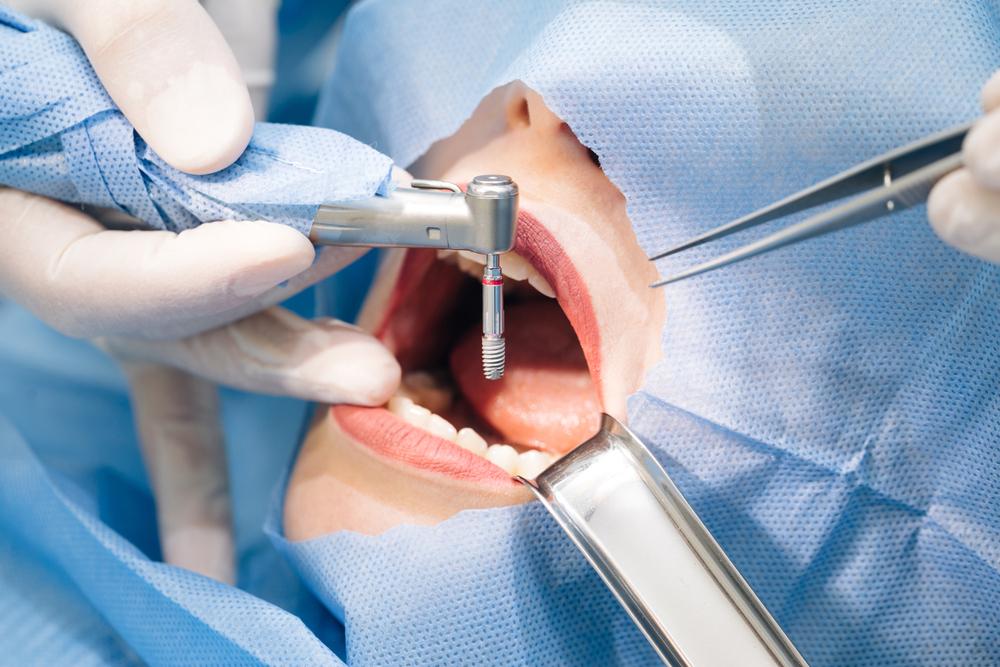The Comprehensive Guide to Extractions and Grafting
Preparing for Dental Implants

Imagine the power of a confident smile, one that not only radiates warmth but also speaks volumes about your dental health. Dental health is more than just maintaining a beautiful smile; it’s a pillar of overall well-being. In this comprehensive guide, we’ll embark on a transformative journey where dental health becomes the gateway to regaining your confident, radiant smile.
Before the emergence of a revitalized smile through dental implants, there are crucial steps to take. Extractions and bone grafting are the foundation upon which this transformation is built. These steps are far from daunting when understood; they are the pivotal chapters of your journey to oral health and a smile that lights up the room.
Throughout this guide, we will shine a light on the intricate process of tooth extractions, bone grafting, and how they play a fundamental role in paving the way for dental implants. We will explore each step with clarity, from understanding why extractions are necessary to the intricacies of the grafting process. Along the way, we will provide you with essential recovery tips, ensuring a smoother path toward the smile you’ve always dreamed of. Let’s begin the journey to your revitalized smile.
FAQ’S
What is a Tooth Extraction?
Tooth extraction is a dental procedure that involves the complete removal of a tooth from its socket in the jawbone. This procedure is typically performed by a general dentist or a specialized dental surgeon. While it may sound daunting, tooth extraction is a routine dental procedure that has been perfected over many years.
Why is Tooth Extraction Necessary for Dental Implants?
Tooth extraction is often a necessary step before getting dental implants. If a tooth is severely damaged, decayed, or infected, it may need to be removed to make way for the implant. Leaving a damaged or decayed tooth in place could lead to further oral health problems, such as gum disease or infection, which could compromise the success of the implant.
Moreover, extracting the problematic tooth helps to ensure that the dental implant has a clean, healthy environment in which to integrate with the jawbone. This is crucial for the stability and longevity of the dental implant.
Different Types of Tooth Extractions
There are two main types of tooth extractions: Simple extractions and surgical extractions.
1. Simple Extraction: This type of extraction is performed on a tooth that can be seen in the mouth. In a simple extraction, the dentist numbs the area with local anesthesia, loosens the tooth with a tool called an elevator, and then removes it with dental forceps.
2. Surgical Extraction: This is a more complex procedure that is used if a tooth may have broken off at the gum line or has not yet come into the mouth (such as wisdom teeth). The oral surgeon makes a small incision into your gum to surgically remove the broken tooth or impacted wisdom tooth.
What to Expect During a Tooth Extraction?
The tooth extraction process begins with a thorough examination of the tooth and surrounding area. Your dentist will take an x-ray of your teeth to determine the best way to remove the tooth.
You'll be given a local anesthetic to numb the area around the tooth to be extracted. During the extraction, it is normal to feel some pressure as the tooth is removed, but the anesthetic will prevent any feelings of further discomfort or pain.
After the tooth is extracted, a blood clot usually forms in the socket. Your dentist will pack a gauze pad into the socket and have you bite down on it to help stop the bleeding. In some cases, the dentist will place a few stitches—usually self-dissolving—to close the gum edges over the extraction site.
After the procedure, it's important to follow all post-care instructions to ensure a swift and smooth recovery. This includes taking prescribed medications, avoiding certain foods, and maintaining oral hygiene.
What is Bone Grafting?
Bone grafting is a surgical procedure that involves taking bone from one area of the body (autograft) or using synthetic or donor bone material (allograft) and transplanting it into another part of the body where bone loss or damage has occurred. The goal of bone grafting is to stimulate the growth of new bone or to provide a supportive structure for existing bone to heal and regenerate. This procedure is commonly used in various medical fields, including dentistry.
Why is Bone Grafting Important for Dental Implants?
Bone grafting is crucial for dental implants because it helps create a stable foundation for the implant to be placed. Dental implants are used to replace missing teeth, but they require sufficient bone density and volume in the jaw for successful placement and long-term stability. If a patient has experienced bone loss in the jaw due to tooth extraction, gum disease, or other factors, the jawbone may not be strong enough to support an implant. In such cases, bone grafting is performed to augment the bone in the implant site, ensuring a secure and lasting anchor for the artificial tooth.
Different Types of Bone Grafts
There are several types of bone grafts used in dental procedures:
1. Autograft: In an autograft, bone is taken from one area of the patient's body (typically the hip, tibia, or jaw) and transplanted to the site requiring bone augmentation. Autografts are considered the gold standard because they have a high success rate and pose minimal risk of graft rejection.
2. Allograft: Allografts involve using bone material from a donor, which is processed and sterilized to minimize the risk of infection or rejection. Allografts are a good option when a patient's own bone is not available or when they prefer not to undergo a second surgical site for bone extraction.
3. Xenograft: Xenografts use bone from a different species, typically bovine (cow) or porcine (pig) sources. This bone is processed and treated to remove organic material and minimize the risk of immune reactions. Xenografts are also used when autografts or allografts are not suitable.
4. Synthetic bone grafts: Synthetic materials such as hydroxyapatite or tricalcium phosphate can be used in bone grafting procedures. These materials are biocompatible and provide structural support for bone regeneration.
What to Expect During Bone Grafting?
The bone grafting procedure typically involves the following steps:
1. Consultation: Our dentists at Kokomo Family Dentistry will assess your condition, take x-rays or scans to determine the extent of bone loss, and discuss the best grafting option for your specific needs.
2. Anesthesia: You'll receive local or general anesthesia to ensure you're comfortable and pain-free during the procedure.
3. Grafting: The selected graft material is placed in the target area. It may be anchored with pins, or a thin covering called a membrane for stability.
4. Healing: Over the next several months, the graft material fuses with your existing bone, encouraging new bone growth. You'll need to follow post-operative care instructions to promote healing and reduce the risk of complications.
5. Implant Placement (if applicable): Once the grafted area has healed and gained sufficient strength, your dentist can proceed with the dental implant placement, allowing you to regain your missing tooth.
Bone grafting is a valuable technique that enables patients with insufficient bone structure to benefit from dental implants and various other medical procedures. It's important to consult with our qualified dentists at Kokomo Family Dentistry to determine the most suitable grafting approach for your specific situation and to understand the entire process.
Recovery and Aftercare Post Extractions and Grafting
The recovery timeline for tooth extractions and bone grafting can vary depending on the complexity of the procedure and individual factors. Here's a general timeline:
1. Immediate Post-Procedure: Right after the surgery, you may experience some initial discomfort, bleeding, and swelling. It is important to start your pain management routine before the anesthetic wears off to keep any potential discomfort at bay.
2. First 24 Hours: Discomfort, bleeding, and swelling are common during the first day. You should rest, avoid strenuous activities, and take any prescribed pain medications as directed.
3. 2-7 Days: Swelling and discomfort typically peak around the second or third day and gradually subside. You may need to stick to a soft diet during this period and continue taking pain medication as needed.
4. 1-2 Weeks: Most patients can return to work or regular activities within a week. The surgical site should start to heal, but you should still be cautious about the foods you consume.
5. 4-6 Months (for Bone Grafting): If bone grafting was performed, it usually takes several months for the graft to integrate with your natural bone. During this time, you'll need to follow specific care instructions.
Tips for Speedy and Successful Recovery
To promote a speedy and successful recovery after tooth extractions and bone grafting:
1. Follow Post-Operative Instructions: Listen to your dentist and follow their specific care guidelines, including medication schedules, diet restrictions, and oral hygiene practices.
2. Manage Pain and Swelling: Take prescribed pain medications as directed and use cold packs to reduce swelling.
3. Maintain Oral Hygiene: Keep your mouth clean but be gentle around the surgical area. Avoid vigorous rinsing or brushing near the site.
4. Stick to a Soft Diet: Eat soft, nutritious foods to avoid disturbing the surgical site. Avoid hot, spicy, and hard foods that could cause irritation.
5. Rest and Avoid Strenuous Activity: Rest is essential for healing. Avoid vigorous exercise and heavy lifting during the initial recovery period.
6. Stay Hydrated: Drink plenty of water, but be cautious with straws, as they can dislodge blood clots at the extraction site.
7. Avoid Smoking and Alcohol: Smoking and alcohol can impede healing. It's advisable to abstain during the recovery period.
8. Follow Up: Attend follow-up appointments as scheduled to monitor your progress and address any concerns.
Potential Complications and How to Address Them
While complications are relatively rare, it's important to be aware of potential issues and how to address them:
1. Infection: If you experience signs of infection (increased pain, swelling, fever), contact your dentist immediately. Antibiotics may be prescribed.
2. Dry Socket: This painful condition occurs when the blood clot at the extraction site dislodges. If you suspect dry socket (severe pain and an empty socket), seek prompt treatment from your dental professional.
3. Graft Failure: In bone grafting, graft failure is possible. If this occurs, your dentist may need to revise the graft or explore alternative solutions.
4. Complications with Dental Implants: If dental implants are part of your treatment plan, complications like implant failure or infection can occur. Follow your dentist's advice for maintaining oral health to reduce these risks.
Remember that every patient's recovery experience is unique. If you have any concerns or questions during your recovery, don't hesitate to contact our team of dental providers. Open communication and proper aftercare can help ensure a successful and comfortable healing process.
Preparing for Dental Implants Post Extractions and Grafting
The timing for dental implant placement post-extraction and grafting is crucial. After tooth extraction, a bone graft is often placed at the same time to preserve the socket and prepare it for future implant placement. The healing period for bone grafts can vary depending on the individual and the extent of the procedure, but typically, it takes several months for the grafted bone to fuse with your natural bone.
Once the grafted area has healed adequately, which is usually confirmed through imaging studies, the dental implant process can begin. This waiting period ensures that the implant has a sturdy foundation to support it for years to come.
What does the Dental Implant Process Involve?
The dental implant process involves several steps. First, the dental implant, which is a small titanium post, is surgically placed into the bone socket of the missing tooth. As the jawbone heals, it grows around the implanted metal post, securing it in the jaw. This healing process can take several weeks or even months.
Once the implant has bonded to the jawbone, a small connector post, called an abutment, is attached to the post to securely hold the new tooth. To make the new tooth or teeth, your dentist takes a 3-D scan of your teeth and creates a digital model of your bite. The new tooth, called a crown, is then fabricated and attached to the abutment.
Tips for Preparing for Dental Implants
Preparing for dental implants involves a few key steps to ensure the success of the procedure:
1. Follow Post-Operative Instructions: After extraction and bone grafting procedures, it's essential to follow all post-operative instructions carefully. These may include avoiding aggressive rinsing, spitting, or the use of straws within 48 hours.
2. Maintain Good Oral Hygiene: Brush your teeth gently but avoid the area of surgery for the first 24 hours.
3. Watch for Warning Signs: If any unusual symptoms occur, such as prolonged bleeding, severe pain, or signs of infection, contact your dentist immediately.
4. Attend All Follow-Up Appointments: Regular follow-up appointments are crucial to monitor the healing process and plan for the next steps of the dental implant procedure.
By following these tips and maintaining open communication with our dental professionals, you can prepare effectively for dental implants and look forward to a successful outcome.
Conclusion:
In conclusion, extractions and grafting serve as the critical foundation for the successful placement of dental implants. These preparatory procedures ensure that your jawbone is robust and capable of securely supporting the artificial teeth, allowing for the restoration of both aesthetics and functionality. They play a pivotal role in enhancing overall oral health, addressing issues such as tooth loss and bone degradation. So, if you're on the path to regaining your smile, remember that while it may be a journey involving multiple stages, patience and commitment will lead to a transformative result.
Embrace this process with confidence, knowing that your dedication to working closely with our dental professionals at Kokomo Family Dentistry, following their guidance, and maintaining good oral hygiene is the key to success. The road may require time and effort, but the destination is a beautiful, fully restored smile that will empower you to embrace life with greater confidence. Your future is bright, and your smile is an integral part of that journey. Keep moving forward, and your radiant, revitalized smile will be a source of joy and self-assurance.





Let’s Get Started
Call Us:
Office Hours :
Mon-Fri: 8:00am-5:00pm
Email Us :
appointments@kokomodentistry.com
Address :
604 East Boulevard, Suite A, Kokomo, IN 46902








